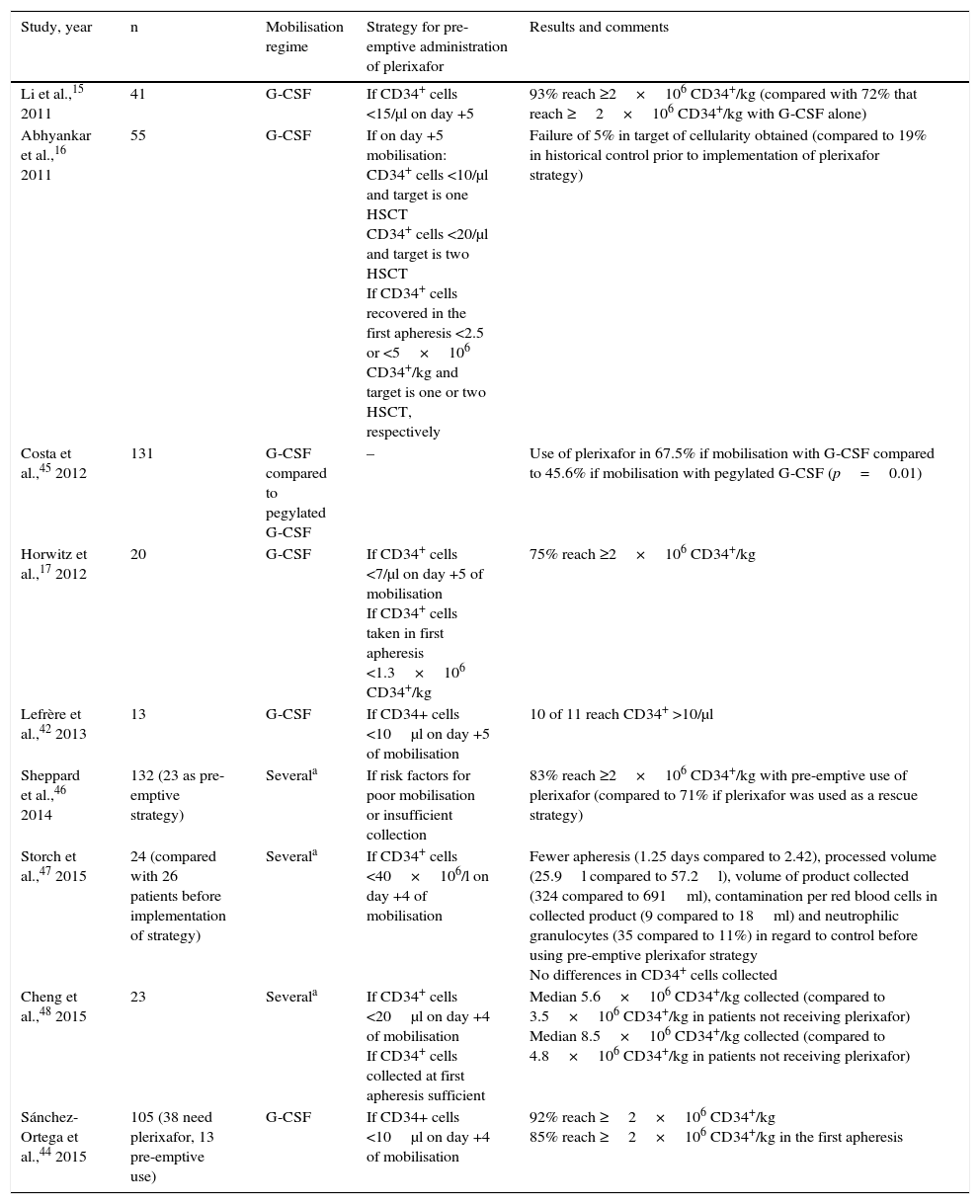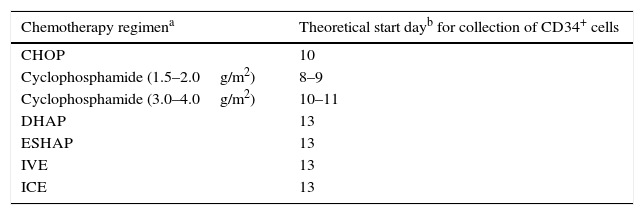Poor mobilisation of peripheral blood stem cells (CD34+ cells) from bone marrow is a frequent reason for not reaching the autologous stem cell transplantation (SCT) procedure in patients diagnosed with lymphoma or myeloma. Plerixafor, a reversible inhibitor of the binding of stromal cell-derived factor 1 to its cognate receptor CXCR4, has demonstrated a higher capacity for the mobilisation of peripheral blood stem cells in combination with granulocyte colony stimulating factor (G-CSF) compared with G-CSF alone. For this reason, plerixafor is now indicated for poor mobiliser myeloma or lymphoma patients. Some studies have recently indicated that a pre-emptive strategy of plerixafor use during first mobilisation, according to the number of CD34+ mobilised cells in peripheral blood or to the harvested CD34+ cells after first apheresis, could avoid mobilisation failures and re-mobilizations, as well as the delay of autologous SCT. The aim of this consensus was to perform a review of published studies on pre-emptive strategy and to establish common recommendations for hospitals in Catalonia and Balearics on the use of pre-emptive plerixafor.
MethodsFor the Consensus, physicians from participant hospitals met to review previous studies as well as previous own data about plerixafor use. The GRADE system was used to qualify the available evidence and to establish recommendations on the use of pre-emptive plerixafor.
Results and conclusionsAfter a review of the literature, the expert consensus recommended the administration of pre-emptive plerixafor for multiple myeloma or lymphoma patients with a CD34+ cell count lower than 10 cells/μL in peripheral blood (measured in the morning of day 4 of mobilisation with G-CSF or after haematopoietic recovery in the case of mobilisation with chemotherapy plus G-CSF).
El fracaso de movilización de progenitores hematopoyéticos a sangre periférica (células CD34+) desde el compartimento medular es una causa frecuente de no realización de trasplante autogénico de progenitores hematopoyéticos (TAPH) en pacientes con linfoma o mieloma. Plerixafor, un inhibidor reversible de la unión del factor derivado del estroma 1 con su receptor CXCR4, ha demostrado mayor movilización de progenitores hematopoyéticos cuando se administra junto con granulocyte colony stimulating factor (G-CSF, «factor estimulante de colonias granulocíticas»), respecto a la movilización con G-CSF solo, por lo que en la actualidad está indicado en pacientes con mieloma o linfoma y escasa capacidad de movilización. En los últimos años algunos estudios han señalado que una estrategia de administración anticipada de plerixafor durante la primera movilización, basada en el número de células CD34+ movilizadas a sangre periférica o en la celularidad obtenida en la primera aféresis, podría evitar fracasos de movilización y nuevas movilizaciones, así como el retraso del ulterior trasplante. El objetivo del presente consenso fue realizar una revisión de la bibliografía y establecer unas recomendaciones comunes para hospitales de Cataluña y Baleares para la utilización de una estrategia de administración anticipada de plerixafor.
MétodosPara la elaboración del documento de consenso se realizaron reuniones presenciales en las que se realizó una revisión de la bibliografía y de datos propios procedentes de los hospitales participantes. Para calificar el grado de la evidencia disponible y establecer las recomendaciones de uso anticipado de plerixafor se ha utilizado el sistema GRADE.
Resultados y conclusionesTras la revisión de la bibliografía, el consenso de expertos definió que con un recuento inferior a 10 células CD34+/μl en sangre periférica (determinado en la mañana del día cuarto de la movilización con G-CSF solo o en el día de la recuperación hemoperiférica tras la movilización con quimioterapia seguida de G-CSF) se recomienda la administración anticipada de plerixafor.









